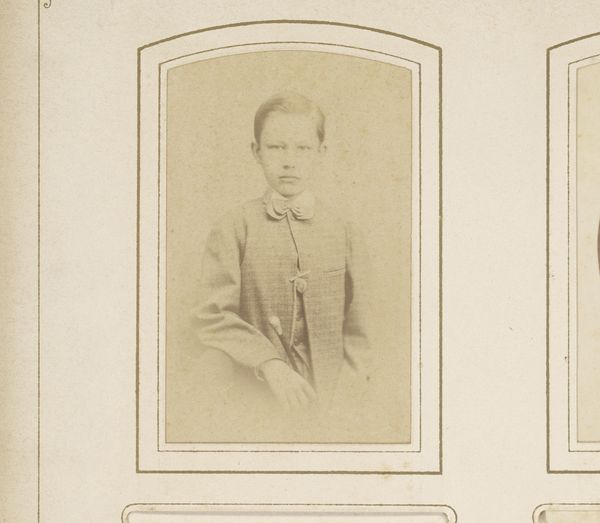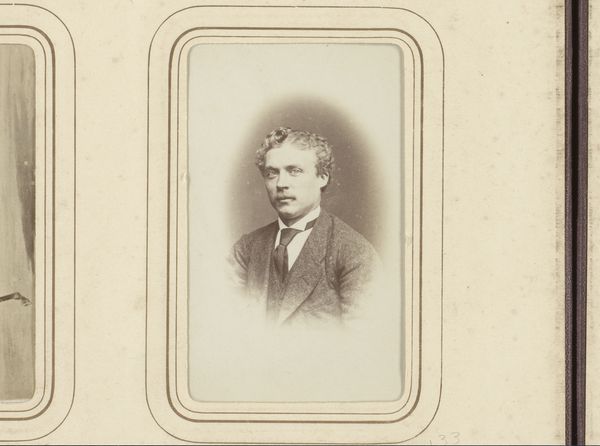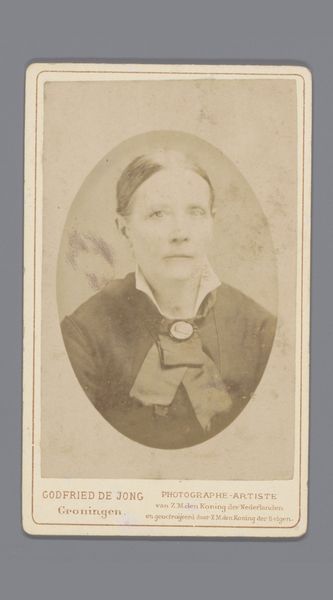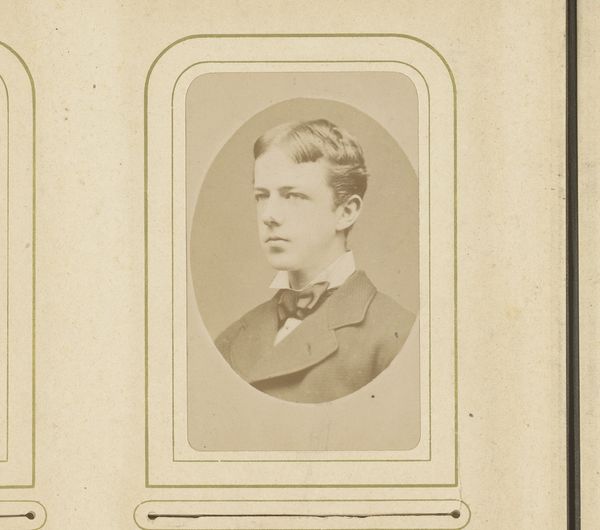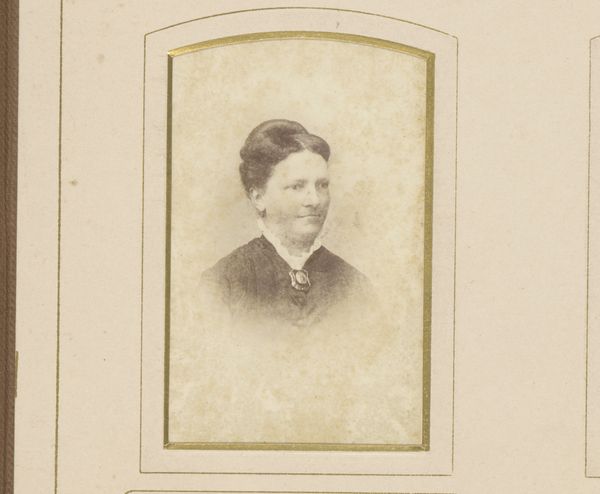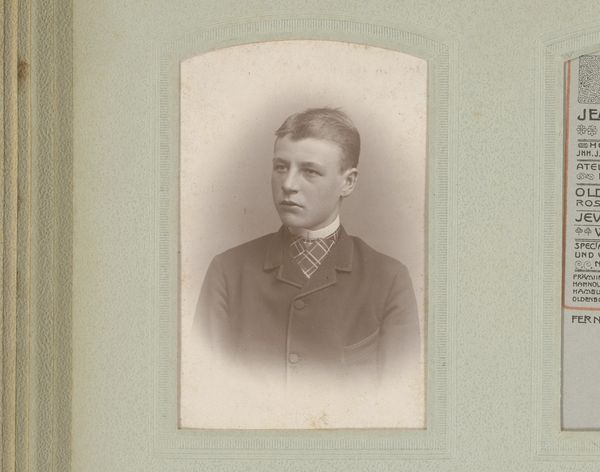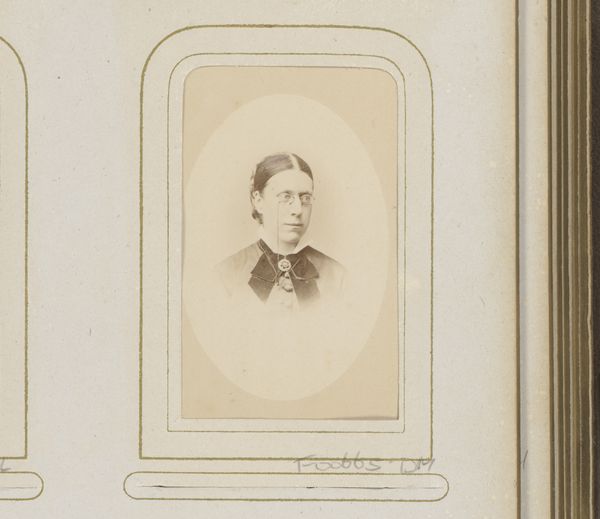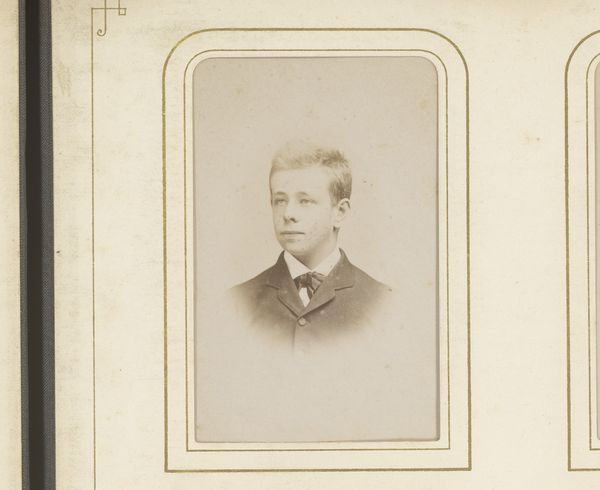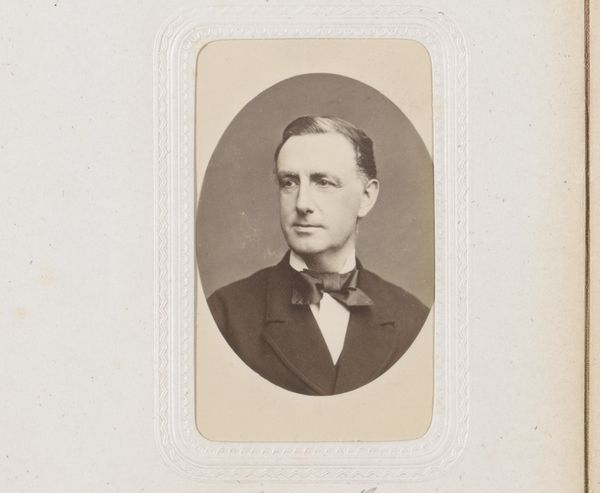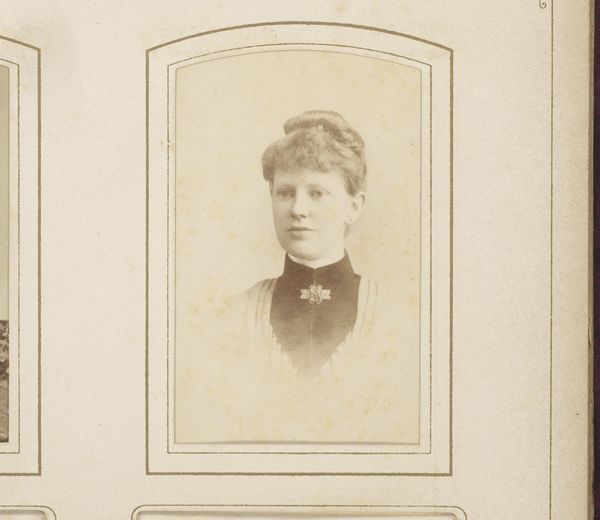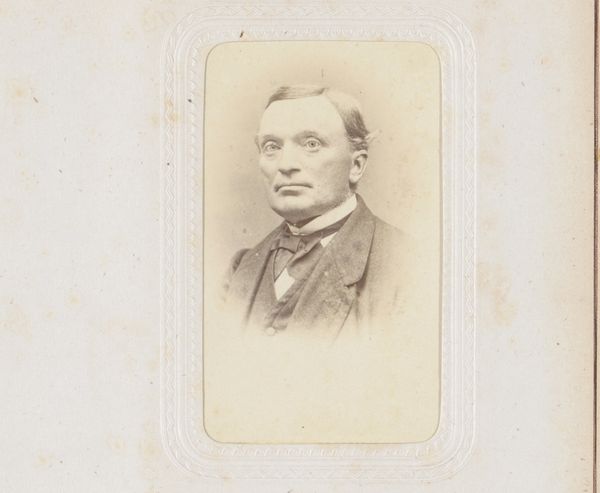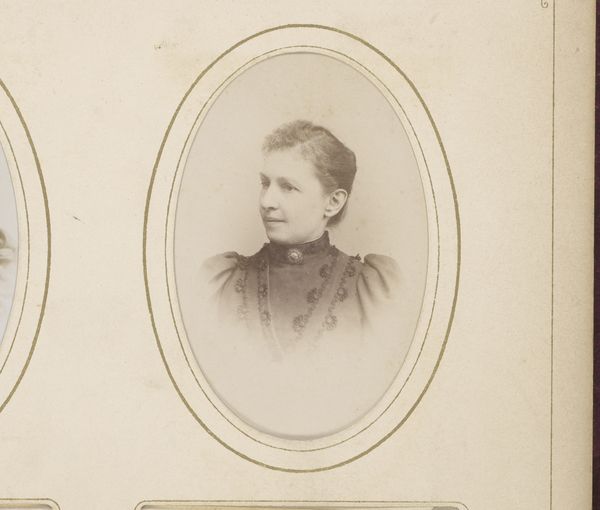
photography, gelatin-silver-print
#
portrait
#
photography
#
gelatin-silver-print
Dimensions: height 85 mm, width 51 mm
Copyright: Rijks Museum: Open Domain
Curator: Here we have a piece titled "Portret van een jonge vrouw" – a portrait of a young woman, a gelatin-silver print dated sometime between 1860 and 1900 by Ernst Ulbrich. What strikes you first about it? Editor: An immediate feeling of stillness and formality. The palette is almost entirely monochromatic, focusing attention on subtle tonal shifts and textures. The geometric rigidity in its presentation creates a framed solemnity. Curator: The portrait does communicate that era's photographic style of rigid formality. It really echoes the Victorian era’s concept of decorum. How would that manifest in the symbol system here? Editor: Notice how the artist composed her within the frame. Centered, gazing to the left – away from direct engagement. This choice creates a distance, preserving an aura of inaccessible modesty – also note the faint ornamentation along the buttoned-up dark clothing and the neutral studio background, devoid of context that creates a generalized and formal atmosphere. Curator: Indeed, there’s a stark simplicity. These photographic portraits were important markers of social identity. It may look austere to us, but perhaps, for the sitter, it signified an aspirational ascent of some kind. To pose for a photograph would have been a way of solidifying one's presence. What lasting meaning did she hope to leave behind? Editor: Precisely. The image, though physically small, projects authority through its careful arrangements of line, tone, and pose. It serves not just as a record but also as an artifact of a carefully constructed self. One cannot forget its object-hood here either; this isn't a purely documentary gesture, but one loaded with meaning within its photographic, archival form. Curator: A constructed self striving for visibility through available means in the nineteenth century—a concept worth contemplating as we depart. Editor: A compelling analysis underscoring the image’s layers, especially its careful play of surface and self-representation within an era undergoing its own massive shifts in social practice. Thank you.
Comments
No comments
Be the first to comment and join the conversation on the ultimate creative platform.
